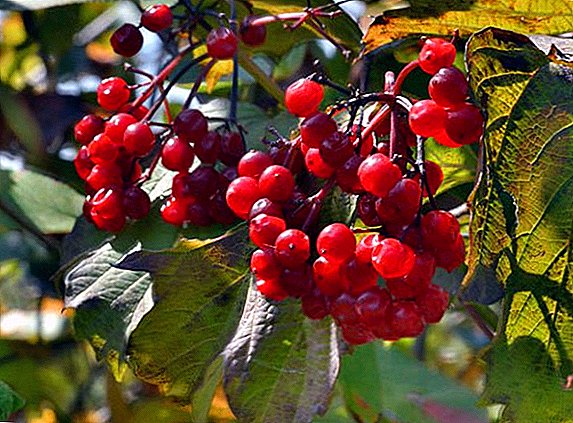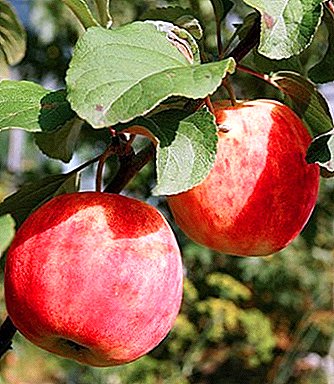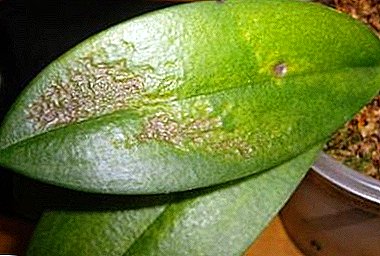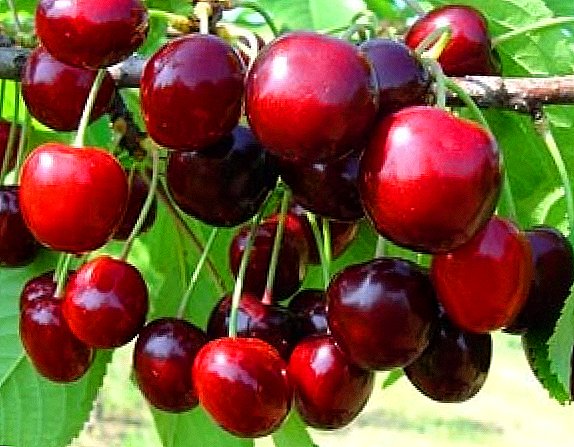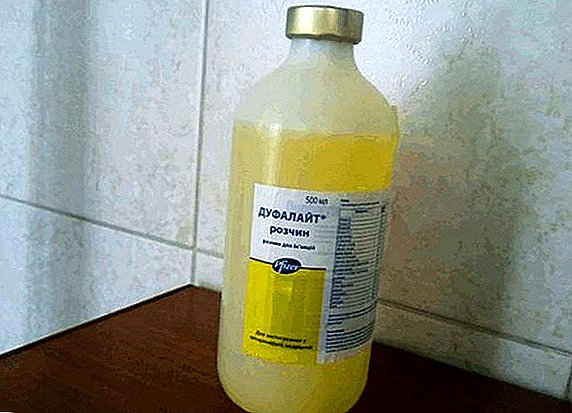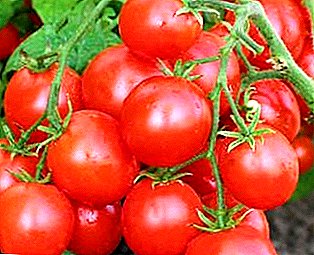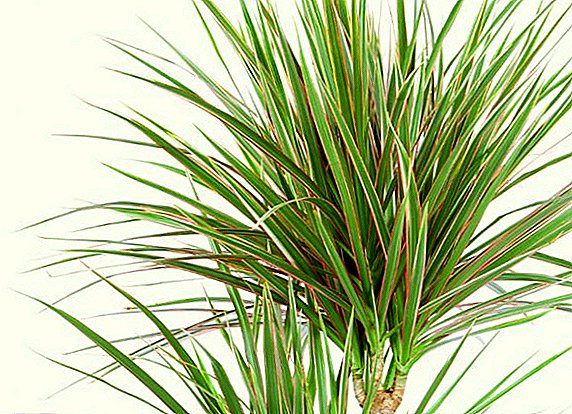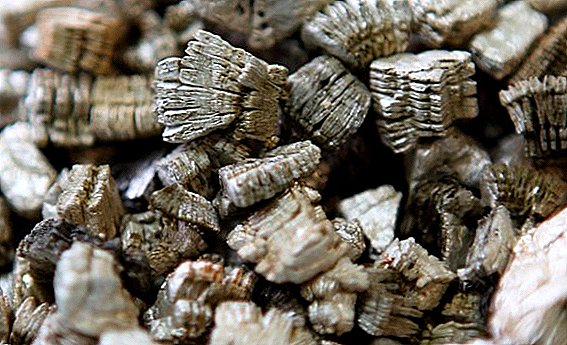 The normal development of any agriculture depends on the quality of the soil. Over time, the properties of the soil deteriorate - water and air permeability falls, it compresses, hardens. Roots don't get enough air and water. Washed nutrients, fertility decreases.
The normal development of any agriculture depends on the quality of the soil. Over time, the properties of the soil deteriorate - water and air permeability falls, it compresses, hardens. Roots don't get enough air and water. Washed nutrients, fertility decreases.
On the other hand, the overmoistening of the earth often occurs; when fertilizing with mineral fertilizers, a surplus of this or that substance may occur. In any case, the plants start to hurt, lose their qualities and die. If we are talking about indoor crops, then the plant can be saved by transplanting it into a new soil; in the case of non-replaceable soils, this option is not suitable.
 The correct solution to such agrotechnological problems will be to find a means to change the structure of the soil, to improve its parameters. Natural mineral vermiculite can drastically change the microclimate for the better, not only for the root system, but also for the plant as a whole.
The correct solution to such agrotechnological problems will be to find a means to change the structure of the soil, to improve its parameters. Natural mineral vermiculite can drastically change the microclimate for the better, not only for the root system, but also for the plant as a whole.
Did you know? The discovery of this amazing natural mineral occurred in 1824 in Massachusetts (Webb T. H.), but went unnoticed. All the usefulness of the material found and the awareness of how to use it, became apparent only by the 70s of the twentieth century, after more than a century of research on vermiculite. Its largest deposits are located in the Republic of South Africa, Russia (Kovdorsky field), the USA (Montana), Ukraine, Kazakhstan, Uzbekistan, Australia, India, the Republic of South Africa, and Uganda.
What is vermiculite and agrovermiculite
To understand the nature of this material, you need to know what vermiculite is. Vermiculite - natural layered mineral of golden-brown color, belongs to the group of hydromicas. Formed as a result of hydrolysis and weathering of dark mica. In areas of increased volcanic activity, warming mica deposits to 900–1000 degrees Celsius led to evaporation of bound water between the layers and dehydration.
At the same time, the mineral was modified:
- increased in size by 6-15 times (water vapor expanded mica plates, and worm-like threads and columns similar to small larvae were formed from them. This is where the scientific name of the mineral is “vermiculus” (from the Latin. “worm”, “worm-like ");
- turned into a light, porous material (able to float in water) with a scaly structure, yellow and golden, swollen vermiculite;
- received the ability to absorb metal ions and the ability to actively absorb water (some of it is bound to the molecules of aluminosilicate before the next heating, most of the water is easily transferred).
 Such placers were first discovered in the XIX century. Today, the extracted vermiculite is sorted at the processing plants, divided into fractions and heated, getting expanded vermiculite.
Such placers were first discovered in the XIX century. Today, the extracted vermiculite is sorted at the processing plants, divided into fractions and heated, getting expanded vermiculite.
Important! Vermiculite, depending on the size of the fractions, can be divided into groups - brands. There are 6 groups in total: the first is 0 or Super Micron (up to 0.5 mm), the second is 0.5 or Micron (0.5 mm), the third is Super fine (1 mm), the fourth is Fine (2 mm), the fifth is Medium (4 mm) and the sixth is Large (8 mm). All these brands are actively used in construction, aircraft and automotive, light industry, energy, etc. In the agricultural sector, the third, fourth and fifth fractions are most often used.The question "Agrovermiculitis - what is it and what is its use?" often occurs in gardeners (on packages, as a rule, it says "Expanded vermiculite" or "Vermiculite"). Expanded vermiculite for plants received the name of agrovermiculite (GOST 12865-67).
Did you know? Abroad, vermiculite is often called the "mineral yield" (USA, England), "medicinal mineral" (Japan). Modern agricultural technologies in Germany, France, Israel widely use vermiculite, which requires a constant flow of raw materials. For the production of "clean products" from an environmental point of view, more than 20,000 tons of vermiculite are imported to the countries of Western Europe each year, and more than 10,000 tons are imported to Japan.
Composition and properties of vermiculite
 Vermiculite has a chemical composition close to black micas, contains zeolitic water, as well as oxides of potassium, magnesium, lithium, iron, chromium, manganese, aluminum, etc. After firing, the chemical composition does not change.
Vermiculite has a chemical composition close to black micas, contains zeolitic water, as well as oxides of potassium, magnesium, lithium, iron, chromium, manganese, aluminum, etc. After firing, the chemical composition does not change.
Properties:
- possesses high heat and sound insulation;
- has high temperature resistance;
- environmentally friendly;
- durable;
- possesses unique adsorbing qualities (water absorption coefficient - 400-700%);
- non-toxic;
- does not decay and does not rot;
- does not react with acids and alkalis;
- no odor;
- protects against mold;
- lightweight (after wetting increases the weight four times or more).
How to use vermiculite
Vermiculite is widely used in plant growing. Most often it is used for:
- soil improvement;
- seed germination;
- growing seedlings;
- rooting cuttings;
- mulching;
- drainage, etc.
Important! Vermiculite is practically eternal and has no shelf life - it all depends on how its porous structure is preserved. The lightness and brittleness of the mineral leads to the formation of dust during packing and transportation. Working with large volumes of vermiculite, you need to use gauze bandages. Before applying vermiculite for the first time, it should be rinsed (wash off unwanted dirt and bind dust particles). Before re-use of vermiculite is best to ignite (fry).
The use of vermiculite in indoor floriculture
 In indoor floriculture vermiculite is used primarily for the preparation of soils, the most suitable for a particular type of flowers. For flowers with a small (or under development) root system, the “Fine” brand is used.
In indoor floriculture vermiculite is used primarily for the preparation of soils, the most suitable for a particular type of flowers. For flowers with a small (or under development) root system, the “Fine” brand is used.
If the roots are developed sufficiently, it is advisable to use a mixture of brands "Fine" and "Medium" (in equal shares). For treelike large plants in tubs, it is better to prepare a mixture (1: 1) of "Medium" and "Large".
The approximate content of vermiculite in soil mixtures of the volume of the soil is:
- for succulents - up to 30% (desert), up to 20% (forest), up to 50% (Lithops);
- ficus, dieffenbachy, caladium, alokazy, anthurium, maranth, hibiscus - up to 20%;
- Monster, Clavium, Ivy, Philodendrons, Gemantus, etc. - up to 30%;
- yucca, date palms, crotons, laurels, tsiperusov, dratsen, asparagus, etc. - 30-40%;
- gloxinia, ferns, begonias, violets, tradescantia, cyclamen, arrowroot, etc. - 40%.
Vermiculite (mark "Large") is also used for drainage. For trees in large pots and tubs, drainage is usually up to 2.5 cm (often combined with a layer of expanded clay).
Ideal vermiculite (brand "Super fine" and "Fine") for decorative mulching.
Vermiculite is actively used for cutting the flowers. To root rooted better, preparing the substrate of the brand "Micron" and an aqueous solution with mineral fertilizers. 
Vermiculite is ideal for seedlings - water and fertilizers are absorbed, and then gradually transferred to the plant. The substrate must always be wet (this must be monitored). The rooting process usually takes 5 to 10 days.
Flower bulbs and tubers are well stored in winter, if they are poured with layers of vermiculite (2 to 5 cm).
How to use vermiculite in the garden
The use of vermiculite at the beginning of the garden season will significantly increase the yield.  Mineral is effectively used for:
Mineral is effectively used for:
- seed germination (place the seeds in a transparent bag with vermiculite (brand "Micron" and "Super fine"), pour and leave to germinate in a warm place);
- growing seedlings of vegetables (8-10 days faster than usual). For tomatoes, cucumbers and peppers, the best mixture is ground (5 parts), vermiculite (2 parts), humus (3 parts), and Nitrophoska (40 g per 10 l);
- grafting (1: 1 mixture - peat and vermiculite ("Fine"));
- growing vegetables in the garden and greenhouses (ripening earlier for two weeks, the yield is 15-30% higher). When planting seedlings in the ground, add vermiculite of the brand "Fine" (3-4 tablespoons) to each plant in the well. When planting potatoes - half a cup;
- mulching (helps maintain moisture even during droughts);
- compost preparation (for 1 centner organic mixture of peat, manure, chopped straw, etc. - 4 buckets of vermiculite of the "Fine" and "Medium" brands).
The use of vermiculite in the garden
 When planting seedlings of berry and fruit trees and shrubs, as practice shows, it is effective to use vermiculite. Such seedlings are less susceptible to diseases and develop faster. The average supplement rate is 3 liters ("Fine" and "Medium" brands) per well.
When planting seedlings of berry and fruit trees and shrubs, as practice shows, it is effective to use vermiculite. Such seedlings are less susceptible to diseases and develop faster. The average supplement rate is 3 liters ("Fine" and "Medium" brands) per well.
Another important application for which vermiculite is needed for plants in gardens is the mulching of tree trunks. To do this, more often use a mixture of brands "Fine", "Medium" and "Large". On average, one square meter requires from 6 to 10 liters of such a mixture (when mulching a bush, the norm will be from 3 to 5 liters).
Important! Before mulching pristvolny circle of fruit trees with vermiculite, you must carefully (not to damage the roots) loosen the soil. When mulching, vermiculite should be slightly deepened into the ground.
Vermiculite for plants: the pros and cons of use
Long-term practice shows that the beneficial properties of vermiculite bring numerous advantages.  Vermiculite:
Vermiculite:
- improves soil;
- aerates and maintains water balance in the soil;
- reduces the level of acidity in the soil;
- reduces soil salinization;
- ideal for arranging drainage;
- protects against temperature drops (plants are less susceptible to freezing in winter and drying in summer);
- increases the efficiency of soil fertilization;
- does not decompose and does not rot (biological resistance to microorganisms);
- reduces the threat to the plant of fungi, root rot, etc;
- increases yield;
- promotes hydroponic cultivation of plants;
- increases the storage time of vegetables and fruits;
- is a passive biostimulant (the content of oxides of iron, potassium and other trace elements);
- extracts from the soil and accumulates heavy metals, harmful chemicals (the possibility of obtaining more "cleaner" environmentally friendly products.

However, vermiculite has certain disadvantages:
- when growing seedlings or plants in vermiculite and using hard water for irrigation, there is a risk of a shift in the acid-base balance of the soil to the alkaline side (in this case, it is better to use thawed and boiled water, water softening agents, etc.);
- when vermiculite is used, it is more difficult to diagnose soil pests (sciarid, cherries, etc.);
- without taking into account the gradual release of vermiculite water to the plant, while maintaining the usual mode of irrigation, you can easily re-moisten the soil.
Having considered vermiculite and having understood what it is, we can conclude about the usefulness and feasibility of the active use of this mineral in crop production.


